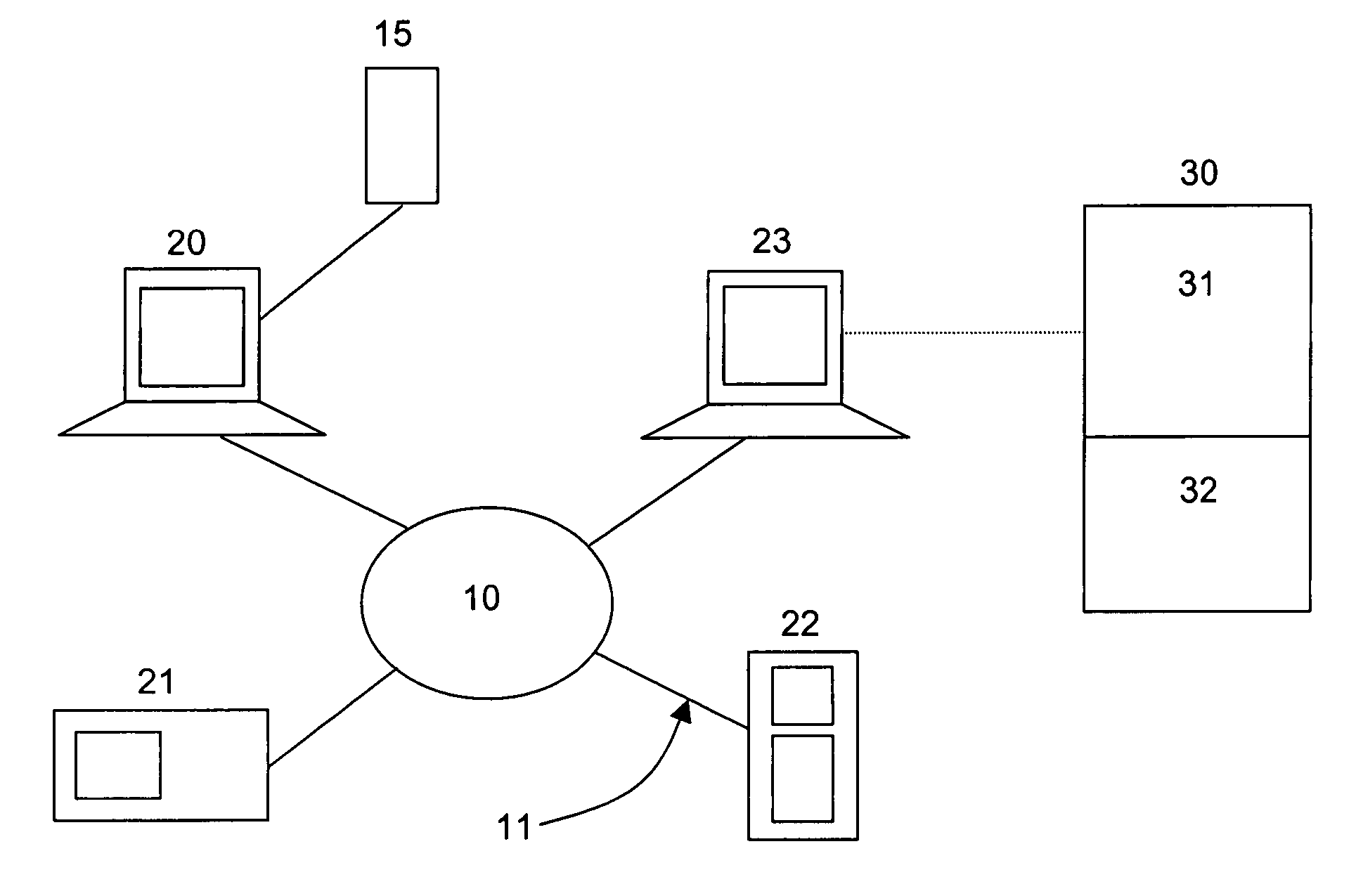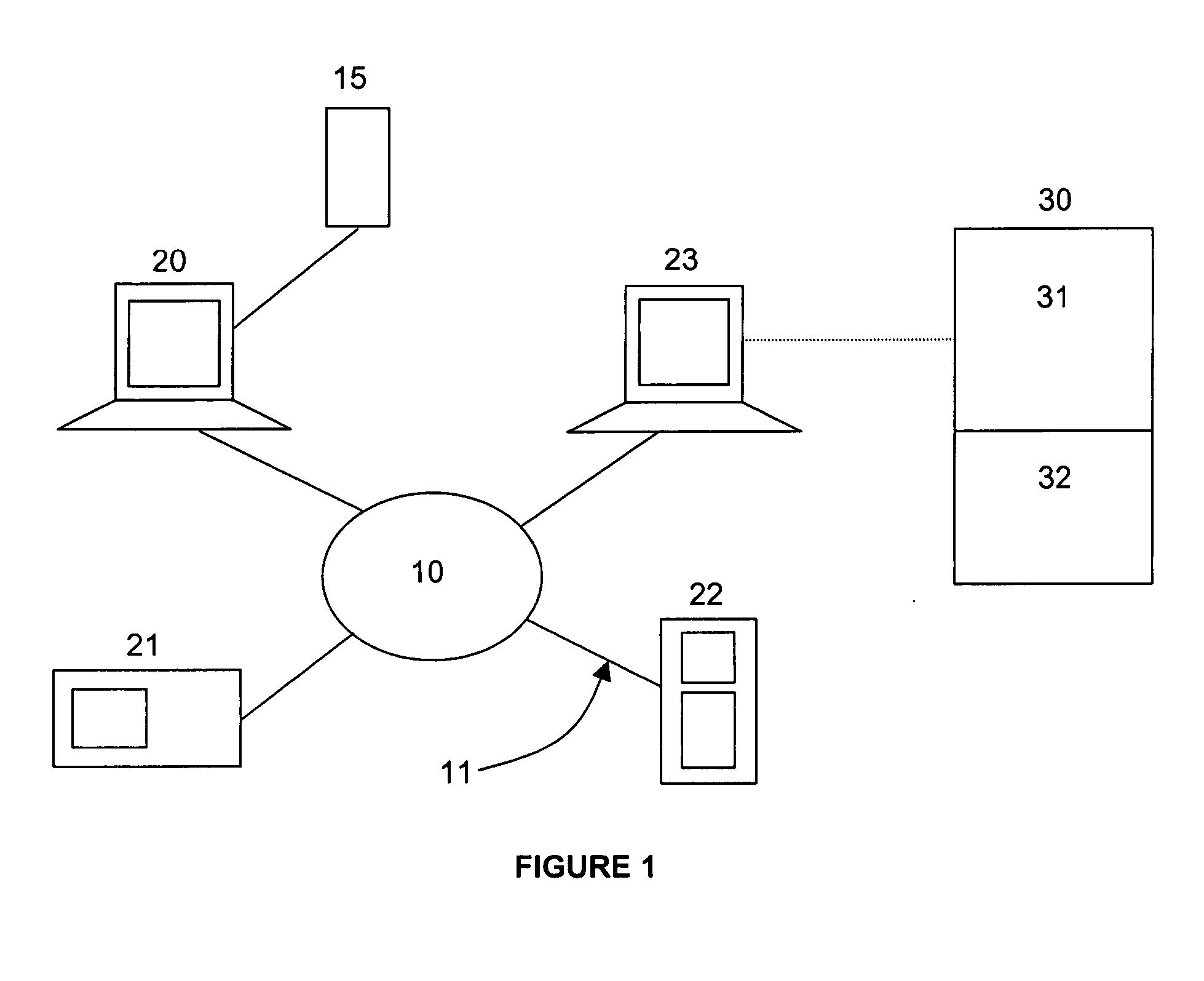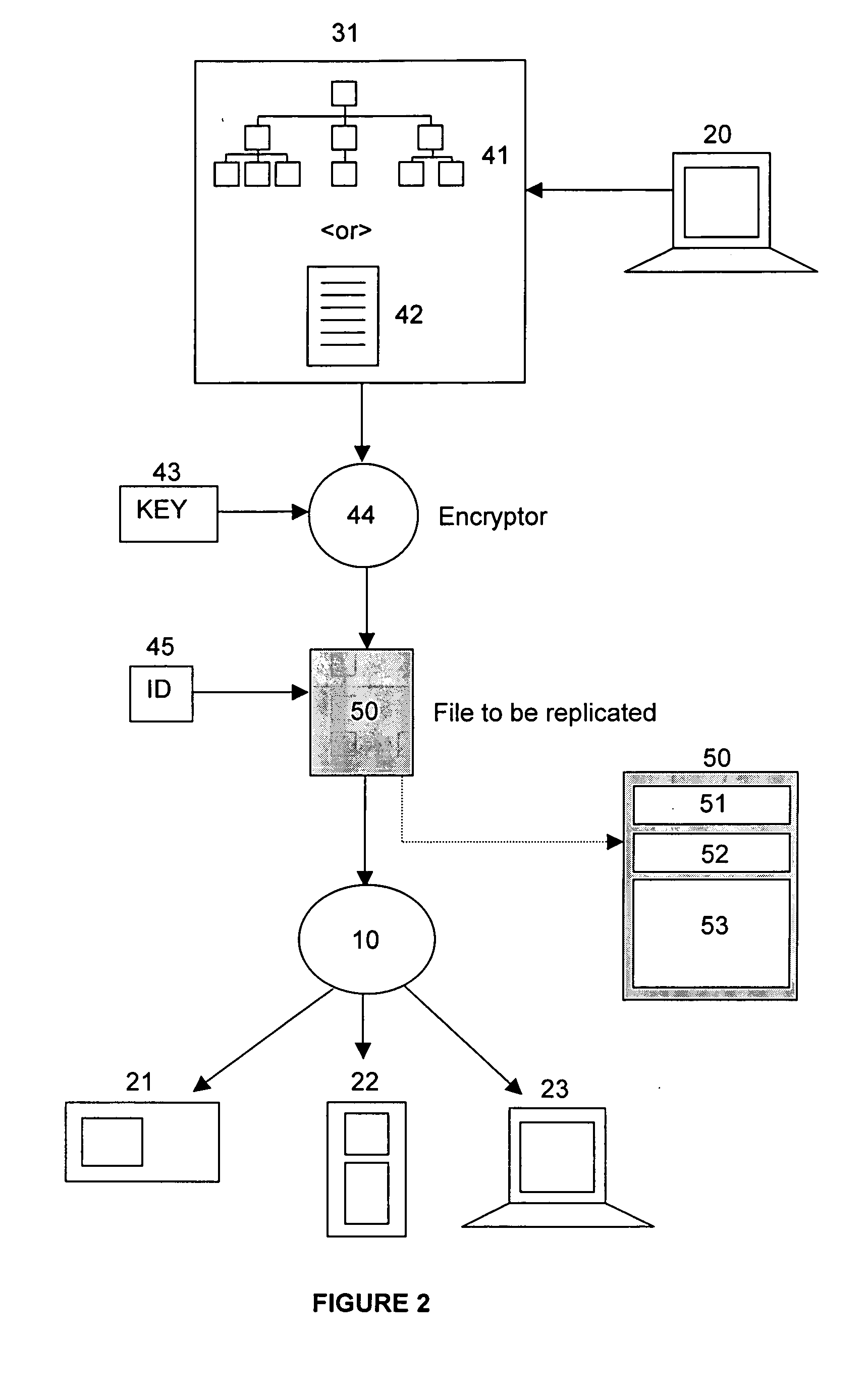Secure virtual account
- Summary
- Abstract
- Description
- Claims
- Application Information
AI Technical Summary
Benefits of technology
Problems solved by technology
Method used
Image
Examples
Embodiment Construction
[0024] With reference to FIG. 1, computers or intelligent devices 20, 21, 22 and 23 make up members of a community for the distributed file storage and retrieval method described herein. Such a community is not limited to four members. The community members are connected to a communication network 10, through communication links 11. A portion of some, but not necessarily all, of the storage capacity 30 of the computers or intelligent devices in the geographically diverse community is made available for sharing with other users, so that the full storage capacity 30 is divided into two sections; a private section 31, and a shared section 32. Each community member can decide to share any amount of storage capacity, from none to all of the capacity. A portable hardware device 15 can be provided for reasons that will be discussed later in this detailed description.
[0025]FIG. 2 depicts the creation of an encrypted file 50 which is to be remotely stored. A representative user computer or ...
PUM
 Login to View More
Login to View More Abstract
Description
Claims
Application Information
 Login to View More
Login to View More - R&D
- Intellectual Property
- Life Sciences
- Materials
- Tech Scout
- Unparalleled Data Quality
- Higher Quality Content
- 60% Fewer Hallucinations
Browse by: Latest US Patents, China's latest patents, Technical Efficacy Thesaurus, Application Domain, Technology Topic, Popular Technical Reports.
© 2025 PatSnap. All rights reserved.Legal|Privacy policy|Modern Slavery Act Transparency Statement|Sitemap|About US| Contact US: help@patsnap.com



